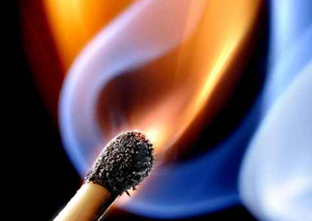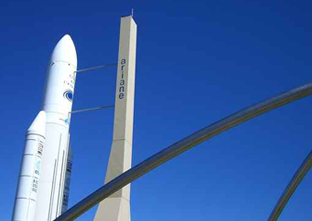Fire safety: Where does the research stand ?

You do a lot of research into the fire behaviour of materials. Plastics are often vilified as the worst toxic-smoke producers ... But are they really ?
The toxicity of smoke given off by a burning material is not just down to the nature of that material. I wish it were, because it would make our testing much simpler. You have to take a systemic and comprehensive approach when analysing a fire. Put simply, it isn’t about just taking a piece of material, heating it in an oven and seeing what happens. You have to look at all the materials that might be present, consider their oxygen content, the temperature reached, how the scenario plays out ... and examine how these factors interact. There is a big difference between a material’s potential and actual toxicity. It often depends more on the conditions in which it is burning - the fire scenario - than just its nature.

Specifically as regards plastics, do you have toxicity data for them ?
 All I can say is – up to a point. Yes, as regards the fire performance of polymers used in vehicles, but much patchier for buildings. The reason is fairly simple. Take a burning vehicle - we know exactly what went to make it and so can do a forensic analysis of what is happening. That is much more difficult for a building, because while we know what materials were used in its construction, we don’t know what the occupants have added (books, furniture, accessories of all sorts, etc.) and these are what will most likely be the source of smoke released during the evacuation phase. What I can is say that the toxicity of plastic smoke holds no bigger cause for alarm than other materials, like some natural materials that are ultimately only polymers made by nature!
All I can say is – up to a point. Yes, as regards the fire performance of polymers used in vehicles, but much patchier for buildings. The reason is fairly simple. Take a burning vehicle - we know exactly what went to make it and so can do a forensic analysis of what is happening. That is much more difficult for a building, because while we know what materials were used in its construction, we don’t know what the occupants have added (books, furniture, accessories of all sorts, etc.) and these are what will most likely be the source of smoke released during the evacuation phase. What I can is say that the toxicity of plastic smoke holds no bigger cause for alarm than other materials, like some natural materials that are ultimately only polymers made by nature!
Knowing the fire endurance of materials is vital to predict their behaviour. What category do plastics fall in ?
 There’s another preconception that needs laying to rest - overall plastics can have very good fire endurance and even excellent structural behaviour in a fire. And industry has long known that.
There’s another preconception that needs laying to rest - overall plastics can have very good fire endurance and even excellent structural behaviour in a fire. And industry has long known that.
Whether for transport or construction, it has been developing a wide range of composite materials with mind-boggling fire and heat behaviour.
Any examples of applications ?
Some used in vehicles are starting to grab public attention, mainly for being lightweight and their rigidity. And they are - but these aren’t the only qualities of composite materials. Fire behaviour is another pretty important one.
And that’s why you’re finding more and more of these new materials in mass-produced cars.
But there are also the wings of Rafale fighter jets, many structural elements of newer aircraft, the aft deck of some military frigates, and the Ariane rocket fairings and nozzles.
Applications in buildings are more recent still, but often
lower-tech.
Concrete/polymer composites are coming onto the market, for example, and are particularly suited to high-rise buildings to overcome the problems of concrete spalling.

And yet some in the building industry argue against using plastic and for natural materials like timber, wool, etc.
 That’s just a personal point of view. For environmental considerations (e.g., in the Grenelle Environment Forum) perhaps, but our research and testing clearly show that you can’t be so dogmatic where fire safety is concerned.
That’s just a personal point of view. For environmental considerations (e.g., in the Grenelle Environment Forum) perhaps, but our research and testing clearly show that you can’t be so dogmatic where fire safety is concerned.
Our job is also to find the materials and products that perform best in fires. The origin of the material is irrelevant to us – the point is to save lives.
Fire safety professionals can’t consider natural materials like timber and wool as better because they can burn very quickly and intensely, and release many toxic gases. You can draw your own conclusions.
LNE in a nutshell
 The institution has been around for more than a century. At the height of the industrial revolution, its job was to meet industry needs for measurement and testing. At the end of the 1970s, in addition to going under the Ministry of Industry, it became a state-owned industrial and commercial entity (EPIC). Its remit has been expanded to include testing for public safety.
The institution has been around for more than a century. At the height of the industrial revolution, its job was to meet industry needs for measurement and testing. At the end of the 1970s, in addition to going under the Ministry of Industry, it became a state-owned industrial and commercial entity (EPIC). Its remit has been expanded to include testing for public safety.
Today, it has five areas of activity: standardized tests for industry, calibration of weights and measures, certification, research, and finally, assistance with standards and regulations for industry.
Potted biography

Eric Guillaume has been involved with smoke toxicity for nearly 15 years, first with French Rail (SNCF), and then, since 2005, at the LNE. An industrial chemistry engineer specialising in process engineering, he is now head of R&D for LNE’s "testing" activities. He is also Chairman of the Standards Sub-Committee X65t "Smoke Toxicity", facilitator of the ISO working group on the matter and author of numerous monographs, books and articles.
ISO and fire safety engineering
Eric Guillaume is in the International Committee for Standardization ISO92, where he is a member of the Fire Threat to People and the Environment Sub-committee tasked with developing standards for measuring smoke toxicity and modelling the impacts of fire on people. "We have a very broad approach, because we are working even today on assessing the environmental impacts of very large-scale fires like forest and refinery fires. Alongside this forward study aspect we are also highly pragmatic - we are currently working to produce guidance on a systems analysis of smoke toxicity for the building industry and our recommendations could well come as a surprise to some".
MORE INFORMATION





